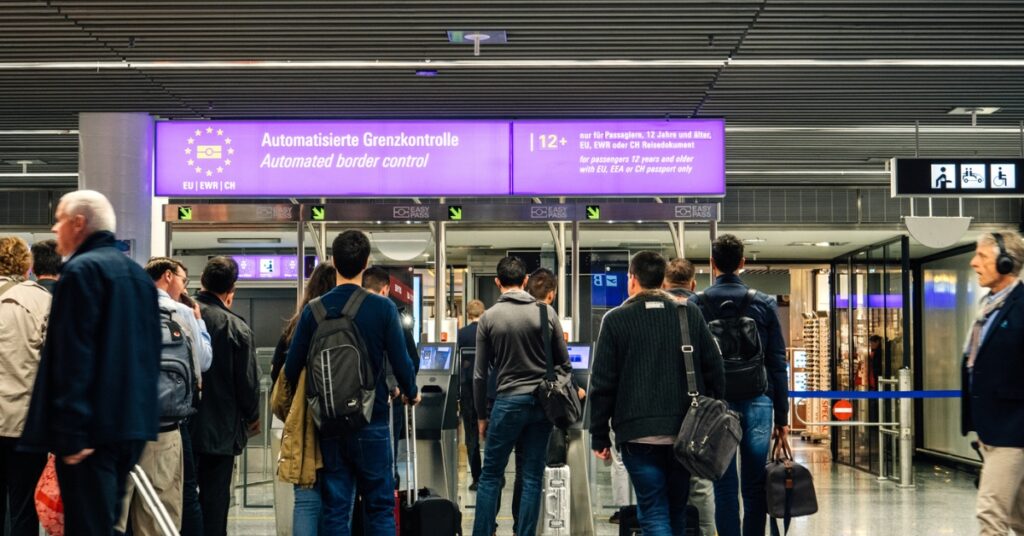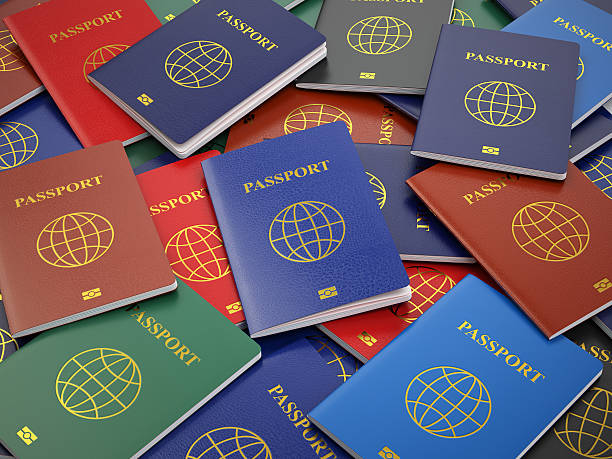eu-LISA Confirms Technical Readiness for EES Launch Across Europe
Oct 8, 2025
Category: Border and Security EES EU News

The European Union will launch its Entry/Exit System (EES) on October 12, 2025.
This new system will automatically record when non-EU nationals enter or leave the EU’s external borders.
It will replace manual passport stamping with biometric checks, aiming to modernize border control, improve security, and help enforce short-stay limits across the Schengen Area.
The launch comes after the EES–ETIAS Advisory Group completed its final review last week at eu-LISA headquarters in Tallinn. The group confirmed that all participating Member States are ready to connect and that preparations for the rollout are finished.
EU prepares for digital border management
The EES will be introduced gradually across 29 European countries, including all Schengen members and associated states such as Iceland, Norway, Switzerland, and Liechtenstein.
The European Union Agency for the Operational Management of Large-Scale IT Systems (eu-LISA) says data collection will start in stages at airports, seaports, and land borders, with full implementation planned by 10 April 2026.
The EES will replace manual passport stamping with a digital system that automatically records each traveller’s entry and exit. It will collect four types of information:
- Personal details from the travel document, such as name, date of birth, and nationality;
- Dates and places of entry and exit;
- Biometric data, including fingerprints and facial images;
- Records of any refused entries.
Aimed at efficiency, security
EU officials called the EES an important step toward modernizing how Europe manages its external borders. The system aims to improve accuracy, shorten waiting times, and help authorities detect overstays or identity fraud.
According to eu-LISA, the EES “makes border checks more modern and efficient” by allowing border guards to identify travelers faster and more accurately through biometric verification.
It also supports law enforcement by helping authorities detect security threats and fight serious crime and terrorism.
At the final Advisory Group meeting on October 3, Paul Sturm of the Netherlands was elected Chairperson, succeeding Theofanis Syrigos of eu-LISA, who led the group during the development phase. Souheil Abdallah of France was named Deputy Chairperson.
The meeting also recognized Syrigos’s role in “ensuring operational readiness” ahead of the launch.

What travelers will experience
For most non-EU nationals—including tourists from the United Kingdom, United States, Canada, Australia, and other visa-free countries—the new system will require biometric registration the first time they enter the Schengen Area.
According to The Independent, British travelers and other “third-country nationals” will still follow the 90-day rule, allowing them to stay up to 90 days within any 180-day period across the entire Schengen Zone.
After October 12, travelers will use self-service kiosks or eGates at their first entry to scan their passports, take facial photos, and provide fingerprints.
Their digital record will stay valid for three years from their last interaction with the system, so they won’t need to re-register unless their passport or biometric data changes.
Member States will roll out the technology over a 180-day transition period. Germany will start at Düsseldorf Airport, while Spain will begin testing at Madrid-Barajas–Adolfo Suárez Airport before expanding to land and sea borders.
The Czech Republic, Estonia, and Luxembourg have confirmed they will be fully ready from day one.
No advance registration required
Travelers do not need to register before leaving for Europe. During the rollout, border officers will continue stamping passports alongside biometric registration.
The EES is separate from the European Travel Information and Authorization System (ETIAS), which will require visa-free travellers to get pre-travel authorization starting in 2026.
According to the Advisory Group, eu-LISA will continue managing ETIAS development until it becomes operational next year, with Athanasia Papavasileiou set to take over as Chairperson in November 2025.
Data protection, privacy
All personal and biometric data collected through the EES will be stored in line with EU data protection rules. Only border, visa, and immigration authorities in participating countries, along with Europol for security purposes, will have access to it.
In certain cases, data may be shared with other countries or international organizations for security or migration management. Travelers have the right to view, correct, or delete their data if it contains errors.

Who is exempt
The EES will not apply to EU citizens, residents of Ireland and Cyprus, or anyone holding a residence permit, long-stay visa, or similar document.
Nationals of Andorra, Monaco, San Marino, and Vatican City are also exempt, along with accredited diplomats, seafarers, and international train crew members on cross-border routes.
Travelers taking part in research, study, company transfers, or cultural exchange programs will continue to follow the current visa and residence procedures.
National facilitation programs
To reduce waiting times for frequent travelers, Member States may introduce National Facilitation Programs.
These programs let pre-registered non-EU nationals go through faster border checks and are available to business travellers or people who often make short visits to several Schengen countries.

Gradual rollout, early testing
The EU said that travelers are unlikely to see major changes right after the system launches. The first few months will act as a controlled rollout, with only some border points using the new technology.
Each country will set its own schedule for installing the system based on its infrastructure.
Spain, France, and Germany will start at airports, while land borders in Eastern Europe and Channel transport hubs—like London St Pancras International and the Eurotunnel terminals—will be added later.
The UK government has stated that medical or travel insurance is not required under the EES, though it is still strongly recommended.
Cruise passengers who start and end their trip in the UK will generally be exempt from biometric registration, except when boarding or leaving the ship at Schengen ports.
Institutional readiness
The EES has been in development for several years as part of the EU Smart Borders Package, which aims to standardize data systems for migration and security.
eu-LISA, based in Tallinn, operates the central network that connects all participating border points to a shared database.
At the final Advisory Group meeting, members confirmed that all national systems passed the required connectivity and compliance tests.
They also reviewed communication plans for travelers and transport operators to ensure coordination across airports, ports, and rail terminals before the system goes live.
Once activated, the EES will automatically link with existing EU databases, including the Visa Information System (VIS), Schengen Information System (SIS), and ETIAS.
This connection will allow authorities to verify identity and travel information more efficiently across borders.

Background and timeline
First proposed in 2013, the EES faced several delays due to technical challenges and the need to coordinate across Member States.
The final testing phase began earlier this year, followed by the 80th meeting of the EES-ETIAS Advisory Group, which marked the last major step before launch.
The EES rollout is the EU’s biggest change to border control in decades, replacing manual passport stamping with digital automation. Its introduction at air, sea, and land borders reflects close coordination between national authorities, the European Commission, and eu-LISA.
The system is based on Regulation (EU) 2017/2226, which sets the rules for recording entry and exit data of non-EU nationals. Its implementation is jointly managed by eu-LISA, Frontex, and national authorities in charge of external border control.
Transition to ETIAS in 2026
Once the EES is fully operational in April 2026, focus will turn to the ETIAS pre-travel authorization system, expected to launch later that year.
ETIAS will require travelers from visa-free countries to fill out an online form and pay a small fee before entering the Schengen Area.
Together, the EES and ETIAS will create a unified system for tracking border movements, replacing paper processes with a digital platform.
This approach aims to make travel smoother while strengthening internal security through consistent data collection at all external borders.
A more secure, seamless future for European travel
When the EED launches, Europe will enter a new era of digital border management that aims to balance efficiency, security, and transparency.
For travelers, biometric checks and digital records will mean faster crossings and fewer passport stamps. For authorities, the system will make it easier to track overstays and protect the integrity of the Schengen Area.
This move from paper stamps to automated verification is more than a technical change; it shows Europe’s commitment to smarter, data-based border control.
With all Member States ready to connect and full rollout expected by April 2026, both travelers and officials are preparing for a faster, safer border experience.
How will travel change once every checkpoint goes digital? For millions visiting Europe, the answer will become clear at the border—one scan at a time.
